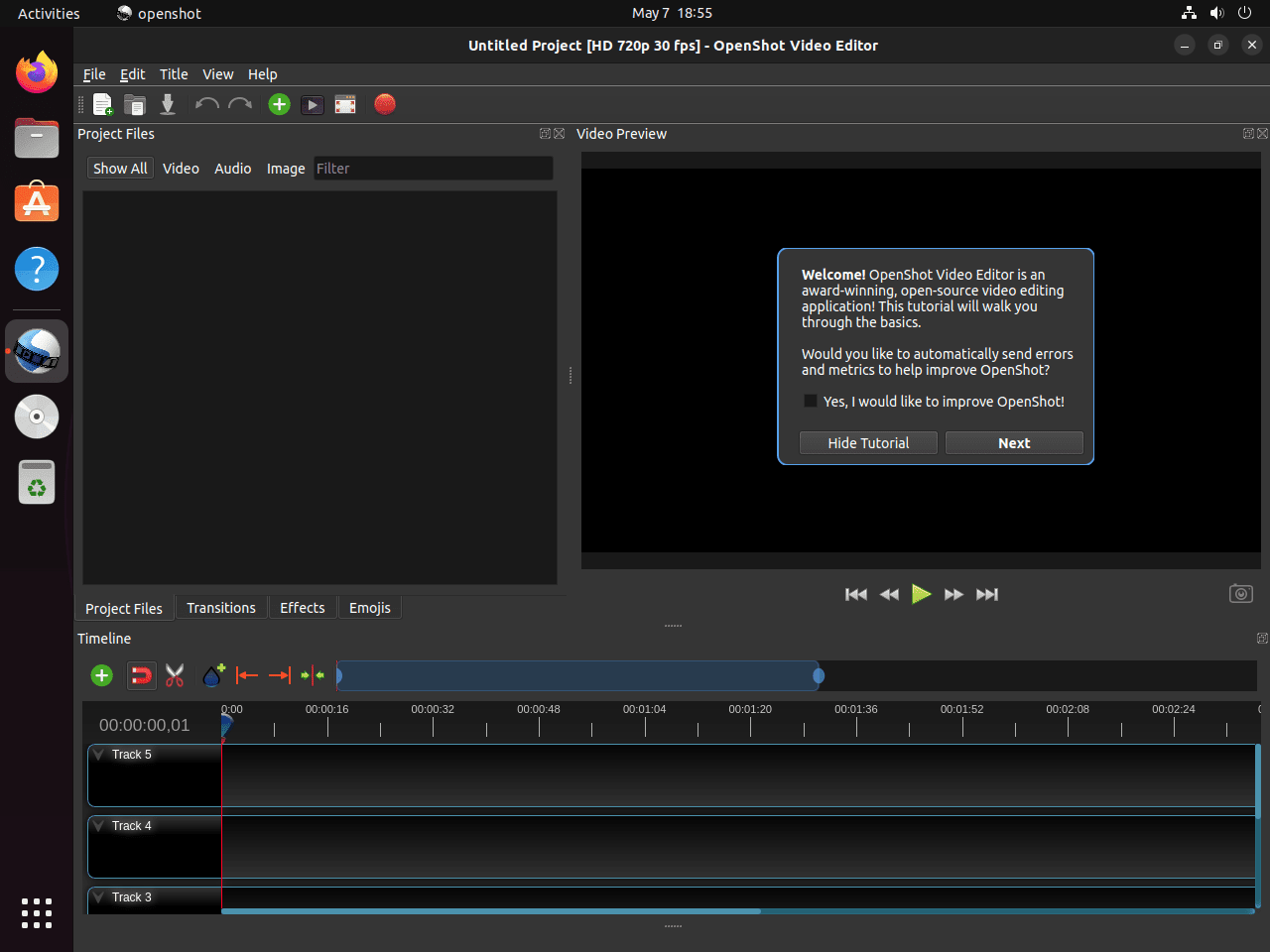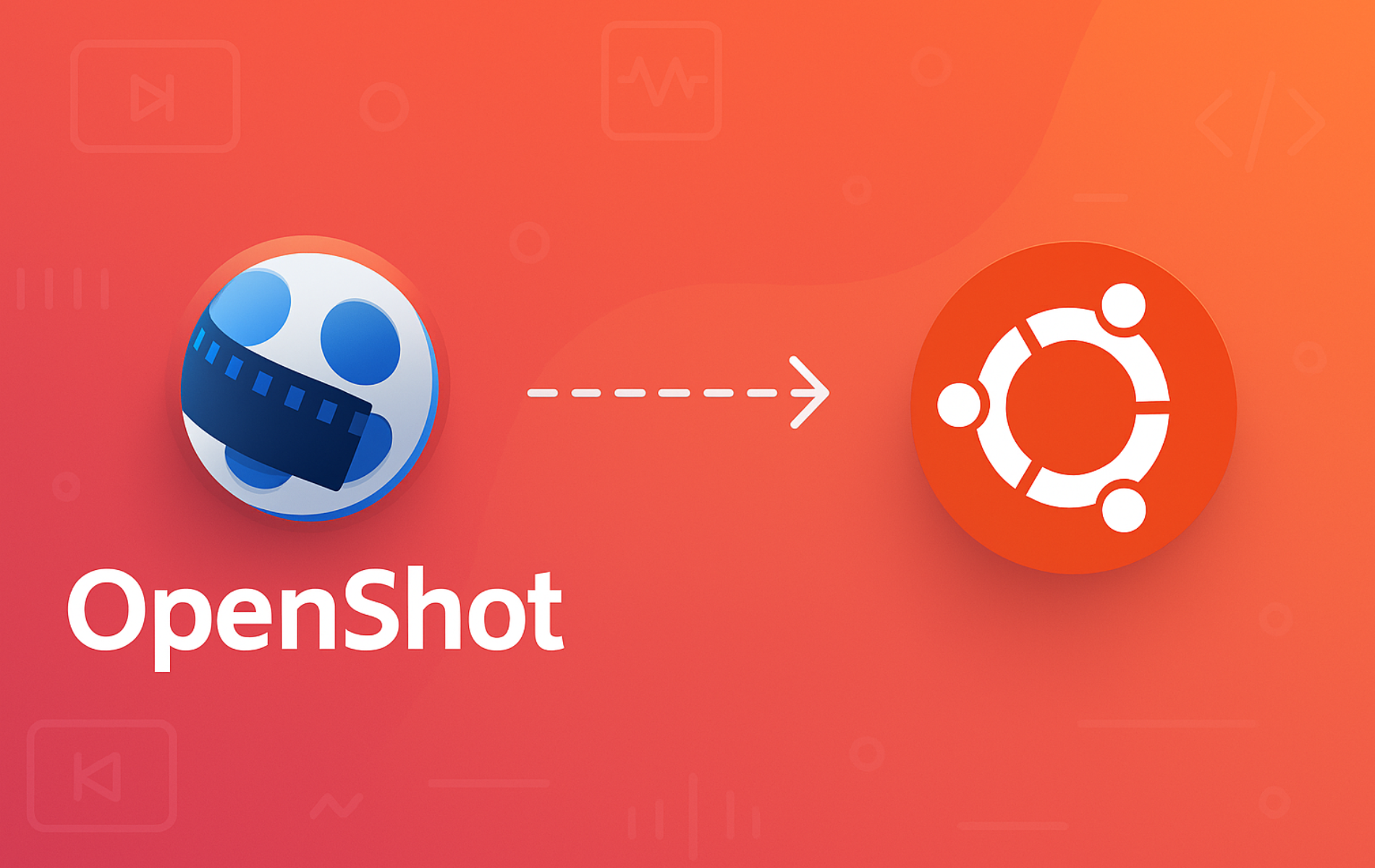OpenShot Video Editor simplifies video production for creators who need multi-track editing without the complexity of professional suites. Whether you’re cutting together YouTube tutorials, adding titles and transitions to podcast clips, or creating educational videos with picture-in-picture overlays, OpenShot provides an accessible timeline-based editor with keyframe animation, chroma key compositing, and hardware-accelerated encoding. This guide walks through installation using Ubuntu’s default repositories, the official OpenShot PPA for newer releases, and Flatpak for sandboxed deployment. By following these steps, you’ll have OpenShot installed with version verification and understand which update path matches your stability preference.
These instructions work on Ubuntu 24.04 LTS and 22.04 LTS. Commands are version-agnostic unless noted.
Choose an OpenShot Installation Method
OpenShot offers multiple installation paths depending on your update preferences and version requirements. First, Ubuntu’s default repositories provide stable, tested releases that are suitable for most users. Second, the official OpenShot PPA delivers newer features and faster updates directly from the development team. Finally, Flatpak provides sandboxed deployment with automatic updates that operate independent of your Ubuntu release.
| Method | Channel | Version | Updates | Best For |
|---|---|---|---|---|
| Ubuntu Repository | Ubuntu Repos | Distribution default | Via apt upgrade with system updates | Users preferring Ubuntu-tested stability |
| OpenShot Stable PPA | Stable PPA | Latest stable | Via apt upgrade after PPA add | Users wanting newest features and faster bug fixes |
| OpenShot Development PPA | Daily Builds PPA | Nightly builds | Via apt upgrade after PPA add | Testers and developers wanting cutting-edge features |
| Flatpak | Flathub | Latest stable | Automatic via Flatpak update | Users preferring sandboxed apps with cross-distro consistency |
For most users, the Ubuntu repository method is recommended because it integrates with system updates and receives security patches through Ubuntu’s standard channels. However, choose the PPA if you need features unavailable in the Ubuntu version or want faster access to upstream releases. Alternatively, Flatpak suits users who prefer containerized applications or run multiple Ubuntu versions with consistent software.
Method 1: Install OpenShot via APT
The APT method installs OpenShot from either Ubuntu’s default repositories or the official OpenShot PPA. First, update your package cache to ensure package metadata is current:
sudo apt updateUbuntu Repository vs OpenShot PPA
Ubuntu’s repository provides stable releases tested against your system packages, while the OpenShot PPA delivers the latest upstream version with newer features and faster bug fixes.
Option 1: Install OpenShot from Ubuntu Repository
Ubuntu’s repository version receives testing and integration with system libraries before release, making it the most stable choice for production workflows:
sudo apt install openshot-qtAfter installation completes, verify it by checking the version:
openshot-qt --versionExample output:
3.1.1
Option 2: Install OpenShot from Official PPA
The OpenShot Developers PPA provides the latest stable releases directly from the upstream project. Before proceeding, you must choose between the stable PPA (recommended for most users) or the development PPA (daily builds with experimental features).
Stable PPA (recommended):
sudo add-apt-repository ppa:openshot.developers/ppa -yDevelopment PPA (daily builds):
sudo add-apt-repository ppa:openshot.developers/libopenshot-daily -yThe stable PPA receives tested releases suitable for production use. In contrast, the development PPA contains daily snapshots that may include incomplete features or regressions. Therefore, most users should choose the stable PPA.
Once you’ve added the PPA, update the package cache and install OpenShot:
sudo apt update && sudo apt install openshot-qtAfter installation completes, verify it:
openshot-qt --versionExample output (PPA version):
3.3.0
Method 2: Install OpenShot via Flatpak
Flatpak provides sandboxed deployment with automatic updates independent of your Ubuntu release. Therefore, this method suits users who prefer containerized applications or need consistent versions across multiple systems.
Ubuntu does not include Flatpak by default. If you haven’t configured Flatpak yet, follow our Flatpak installation guide for Ubuntu to set up Flathub before continuing.
Next, install OpenShot system-wide from Flathub:
flatpak install --system flathub org.openshot.OpenShot -yAfter the installation completes, verify it with:
flatpak list | grep -i openshotExample output:
OpenShot Video Editor org.openshot.OpenShot 3.3.0 stable system
Launch OpenShot
Once installation is complete, you can launch OpenShot from the terminal or applications menu depending on your workflow preference.
Launch OpenShot from Terminal
For command-line users, launch OpenShot with these commands depending on your installation method. With APT installations (Ubuntu repository or PPA):
openshot-qtFor Flatpak installations, use this command instead:
flatpak run org.openshot.OpenShotLaunch OpenShot from Applications Menu
Alternatively, launch OpenShot from your desktop environment’s application menu by searching for “OpenShot Video Editor” or checking the Graphics or Video category.

Manage OpenShot
Update OpenShot
To keep OpenShot current with security patches and feature updates, use the method matching your installation.
If using APT installations (repository or PPA), update the package cache first, then upgrade only OpenShot without touching other system packages:
sudo apt update && sudo apt install --only-upgrade openshot-qtWhen using Flatpak installations, update OpenShot system-wide:
flatpak update --system org.openshot.OpenShotRemove OpenShot
Should you need to uninstall later, remove OpenShot using the method matching your installation.
Remove APT Installation
To begin, remove OpenShot and its orphaned dependencies:
sudo apt remove openshot-qt && sudo apt autoremoveIf you added the OpenShot PPA, you should remove it after confirming no other packages depend on it. To verify this, check installed PPA packages:
apt list --installed | grep openshotIf only openshot-qt appears (and you’ve already removed it), proceed to safely remove the PPA:
Stable PPA:
sudo add-apt-repository --remove ppa:openshot.developers/ppa -yDevelopment PPA:
sudo add-apt-repository --remove ppa:openshot.developers/libopenshot-daily -yAfterward, verify the PPA was removed:
sudo apt update && apt-cache policy openshot-qtAs expected, the output should show only Ubuntu’s default repository, not the PPA.
Remove Flatpak Installation
To remove the Flatpak version, uninstall OpenShot and delete associated user data:
flatpak uninstall --system --delete-data org.openshot.OpenShot -yTroubleshooting Common Issues
OpenShot Fails to Launch
If OpenShot crashes on startup or displays library errors, check the error output first:
openshot-qt 2>&1 | grep -i errorCommon error example:
ImportError: libopenshot.so.25: cannot open shared object file: No such file or directory
To resolve this issue, reinstall OpenShot with all dependencies:
sudo apt install --reinstall openshot-qtSubsequently, verify the fix by launching OpenShot again. If successful, it should open without errors.
Hardware Acceleration Not Working
First, check if your GPU is recognized by the system:
glxinfo | grep "OpenGL renderer"Example output showing working GPU:
OpenGL renderer string: Mesa Intel(R) Graphics (ADL GT2)
If output shows “llvmpipe” or “software rasterizer,” your GPU drivers are not loaded. In this case, you’ll need to install appropriate drivers for your hardware. After installing the drivers, enable hardware encoding in OpenShot at Preferences → Performance and select your GPU vendor (NVIDIA, AMD, Intel).
Export Fails or Produces Corrupted Files
To begin troubleshooting, check available disk space because 4K exports require substantial temporary storage:
df -h /homeEnsure at least 10-20 GB free for large projects. If disk space is adequate, reduce preview quality during editing to conserve resources, then export at full resolution. Alternatively, when exports consistently fail, try a different codec preset. For most projects, H.264 MP4 with Medium quality works reliably.
Conclusion
You’ve successfully installed OpenShot using your chosen method, whether that’s the Ubuntu repository for stability, the official PPA for latest features, or Flatpak for sandboxed deployment. After verifying the installation with version checks, you can now create multi-track timelines with drag-and-drop clips, apply keyframe animations to titles and effects, and export videos with hardware-accelerated encoding. To enhance production workflows, consider configuring automatic backups in Preferences → Autosave and enable proxy editing for 4K footage to improve timeline performance. Additionally, explore our OBS Studio installation guide for Ubuntu for screen recording, install Videomass on Ubuntu for batch video conversion, or learn how to install Flatpak on Ubuntu Linux to access additional multimedia tools.



Tried Method 1, option 2: from stable PPA. But I get the error: “wrong version of libopenshot detected”. Seems not so stable…
Thanks for reporting this, Al. The “wrong version of libopenshot detected” error typically occurs when OpenShot’s Python bindings expect a different library version than what’s installed. The article now includes a troubleshooting section that addresses this issue.
First, check the actual error details:
Then reinstall OpenShot with all dependencies to resolve version mismatches:
If the issue persists after reinstalling, the stable PPA may have a temporary packaging issue. In that case, you can switch back to the Ubuntu repository version (which uses older but thoroughly tested library versions) or wait for the PPA maintainers to resolve the dependency conflict.